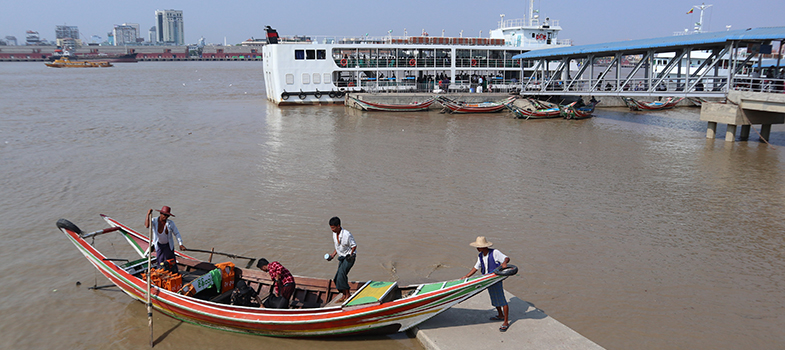2.8 Using water resources to enhance Myanmar’s development
Water is essential for socio-economic development and for the maintenance of healthy ecosystems. If it is efficiently managed, it can be a driver for growth and poverty reduction. The lack of access to a reliable water source and the variability in yield and quality are constraints on livelihood and agricultural development in Myanmar. The hydropower potential could be harnessed to provide much needed electricity for the growing sectors of industry and services.
Myanmar’s rivers are the main transport channels, providing corridors for travel around the country and facilitating the movement of large volumes of agricultural produce, minerals, forest products and manufactured goods to the country’s population centres and ports (Government of Myanmar, 2017).
To harness Myanmar’s water resources to the engine of economic growth, both structural measures and non-structural measures are needed. Structural measures include the building of dams, canals or treatment plants, networks of irrigation piping systems, and improvement of river water depths for navigability, transport, and river ports.
Non-structural measures include institutional reforms, development of water standards, the provision of modern hydrographic and navigational information systems to reduce risks for shipping and improve navigation, and a national water law. Both measures are necessary to contribute to economic growth, job creation and development generation in Myanmar.
2.7 Water for industrial use
